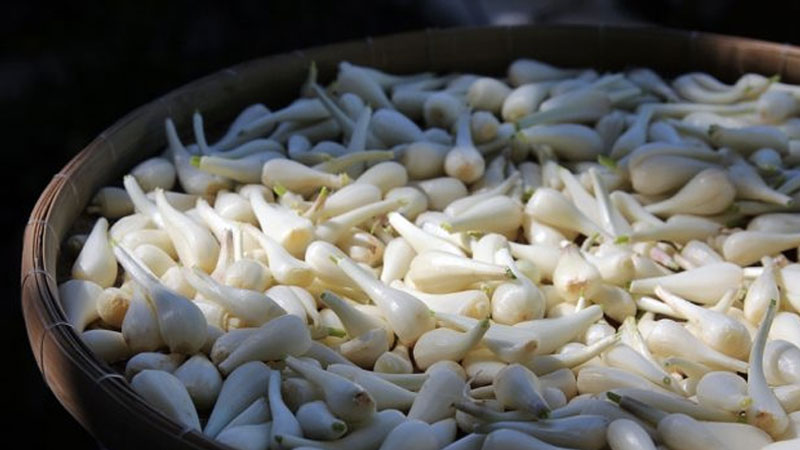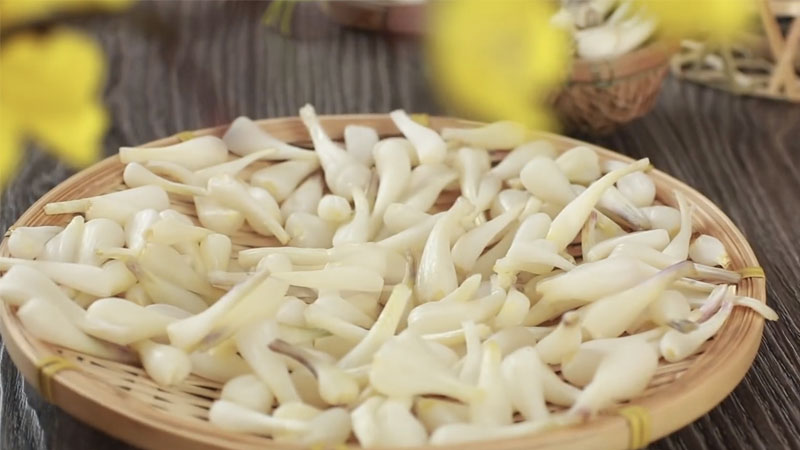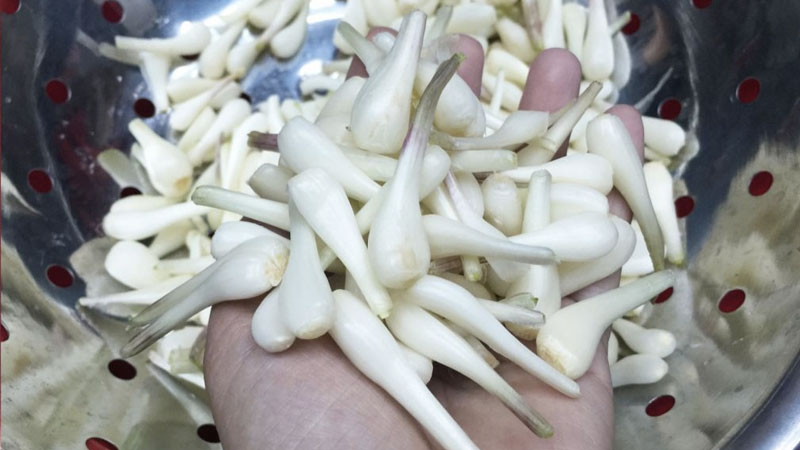Pickled Chinese chives have a spicy and slightly pungent taste. When pickled, they also have a slightly sour and sweet taste. Chinese chives are often eaten as a side dish to reduce greasiness, and they can also be used in many other dishes. But first, let’s learn more about this unique vegetable.
1 What are Chinese Chives?
Chinese chives (*Allium chinense* G.Don) belong to the onion family. The head of the chive has a large, slightly bulging, white color. It resembles an onion but is much smaller.

Chinese chives are grown year-round, but they are mainly cultivated from September to January for harvest during the Tet holiday season. The chives grow to a length of 15-35 cm, with the bulb planted about 3-5 cm underground.
Chinese chives are typically grown in tropical or subtropical regions of China and Japan. In Vietnam, they are cultivated in the central provinces and more recently in the Mekong Delta region.
2 Health Benefits of Chinese Chives
According to Dr. Truong Thi Ngoc Lan, Vice Director and Head of Training and Research at the Institute of Traditional Medicine in Ho Chi Minh City, pickling Chinese chives can help promote beneficial bacteria in the digestive system, such as acidophilus, lactobacillus, and plantarum. These bacteria stimulate and improve digestive function.

Additionally, beneficial bacteria produce the enzyme lactase, which converts lactose into lactic acid, creating a sour taste and breaking down food for better absorption.
Pickled Chinese chives are made from fresh ingredients, preserving a good amount of fiber, which effectively prevents constipation. The pickling process also retains essential nutrients, making this dish a must-have during Tet when we tend to indulge in rich foods that can cause indigestion.

Chinese chives are also rich in antioxidants, which help fight free radicals and slow down the aging process.
The lactic acid produced during the pickling process helps reduce cholesterol levels and improves blood circulation.

3 How to Distinguish Chinese Chives from Onions
Onions and Chinese chives are related, but there are noticeable differences in their size and shape:
Onion Bulb: The bulb is white, larger, and rounder than Chinese chives.
Chinese Chives: The bulb is smaller, slender, and longer. It has a lighter purple color compared to onions.

We hope this information has helped you learn more about Chinese chives and their benefits. Feel free to leave a comment if you have any thoughts or feedback!
Tips for Selecting Sweet, Unsprayed Star Gourds
Discover the secrets of selecting sweet and flavorful star gourds with this informative article! Gourds are a nutritious and delicious addition to any meal, so find out how to find the best of the best with the tips provided.






































